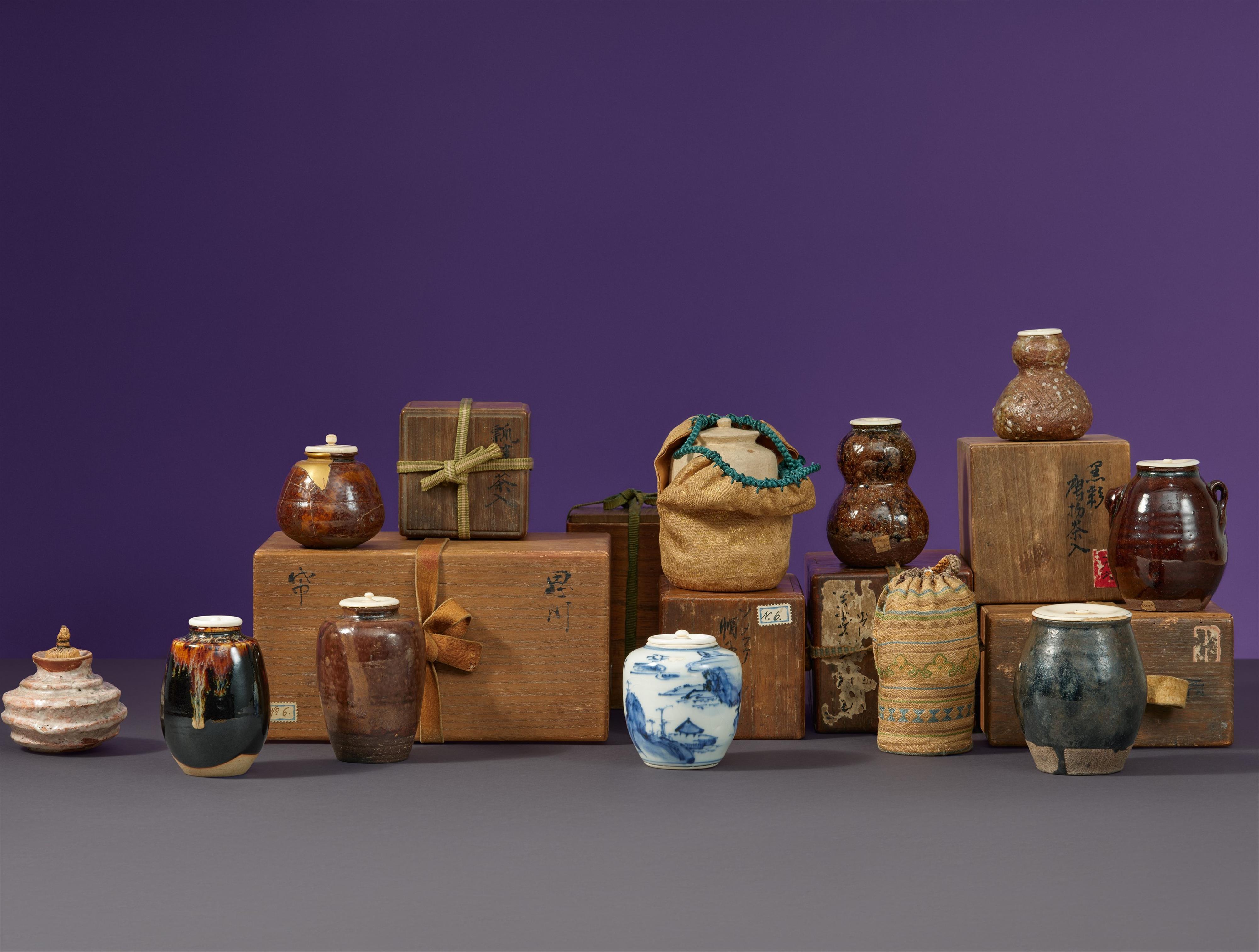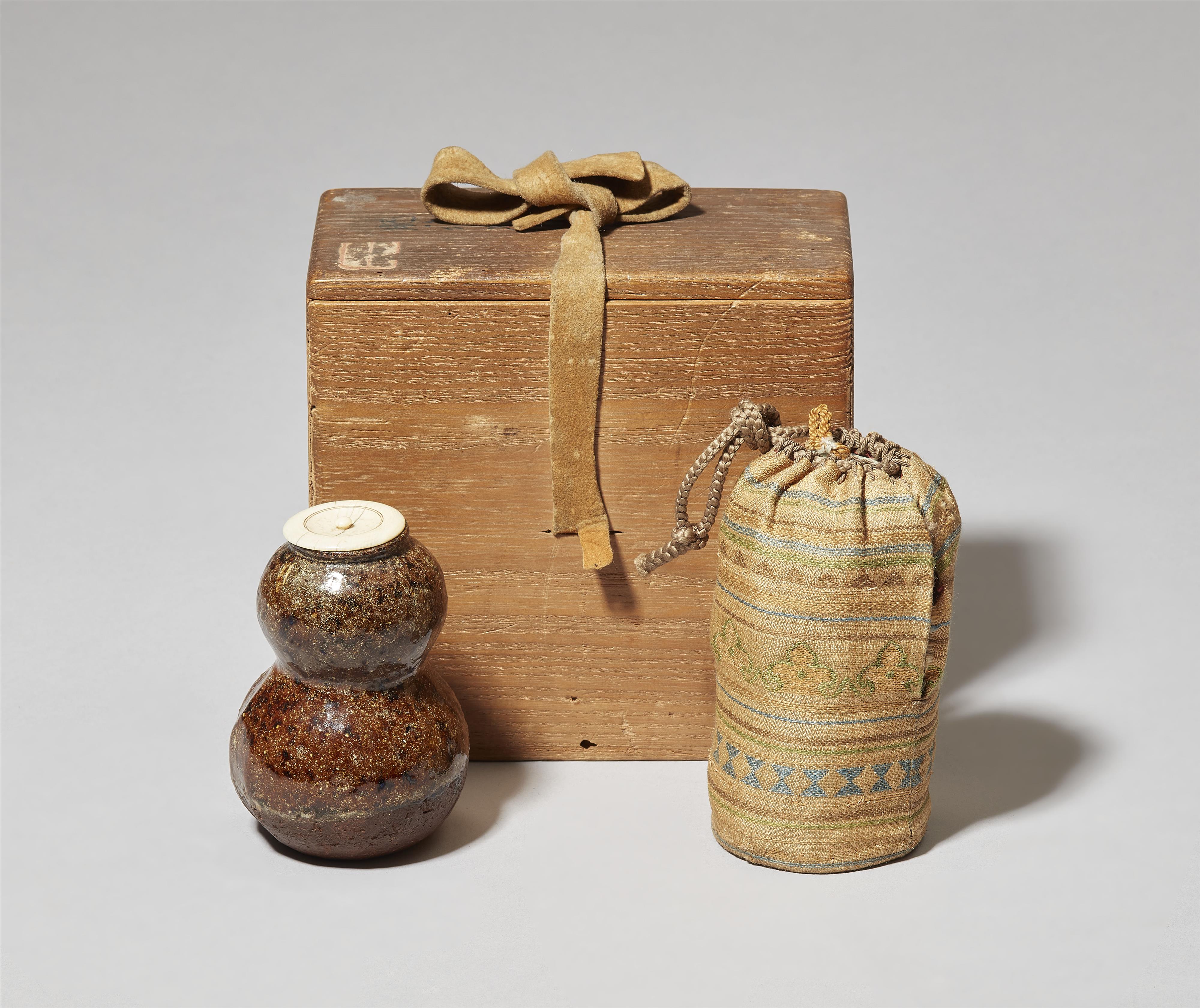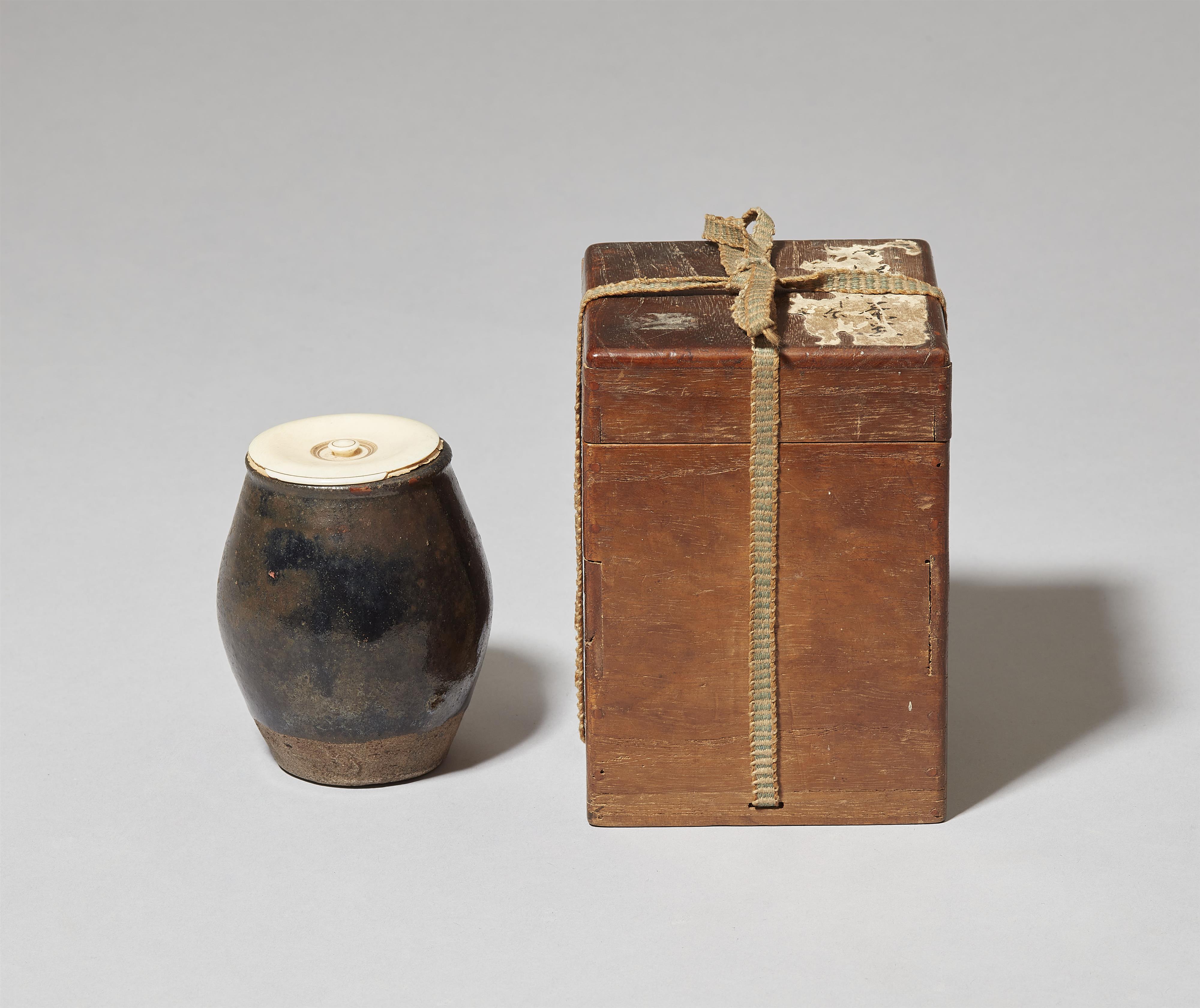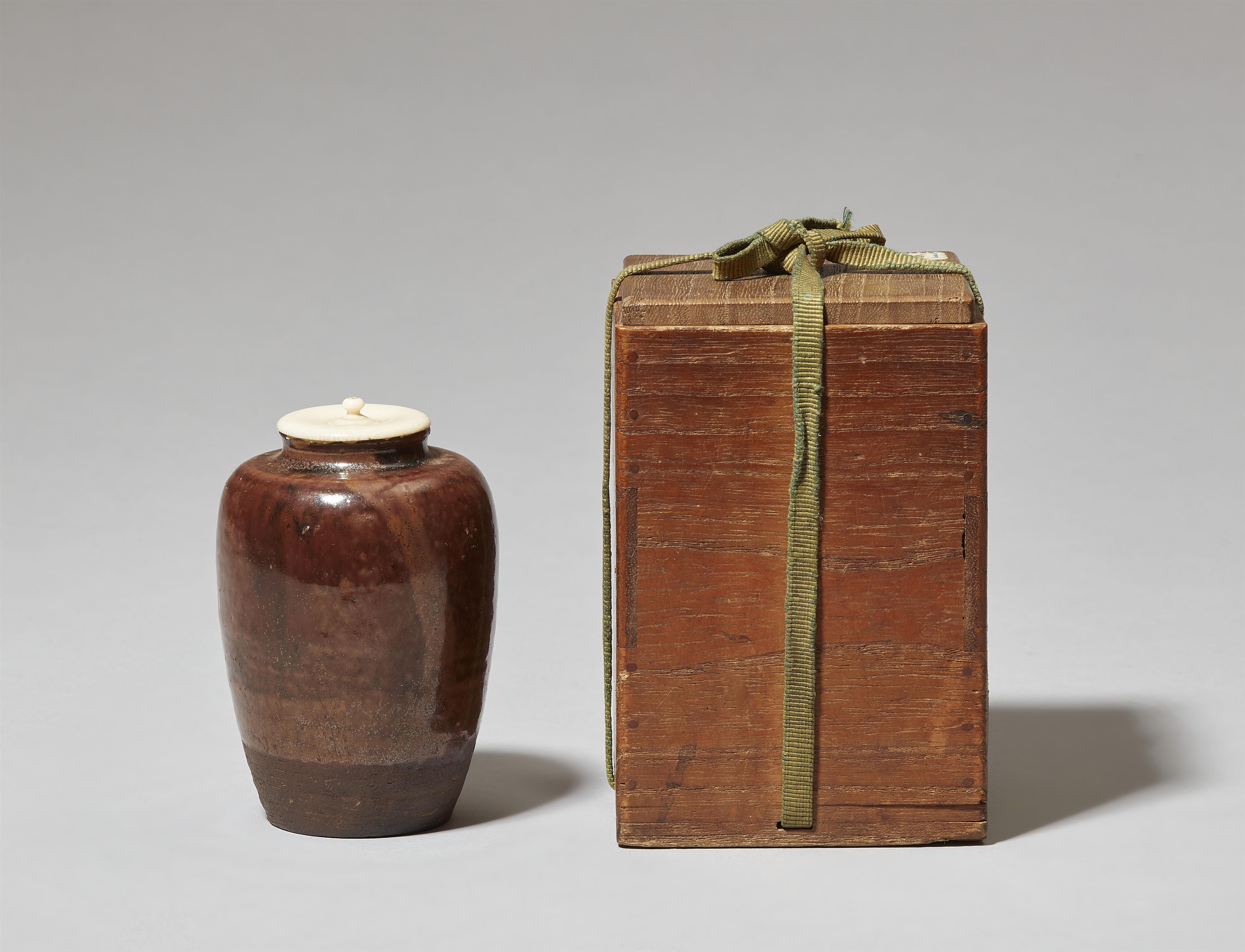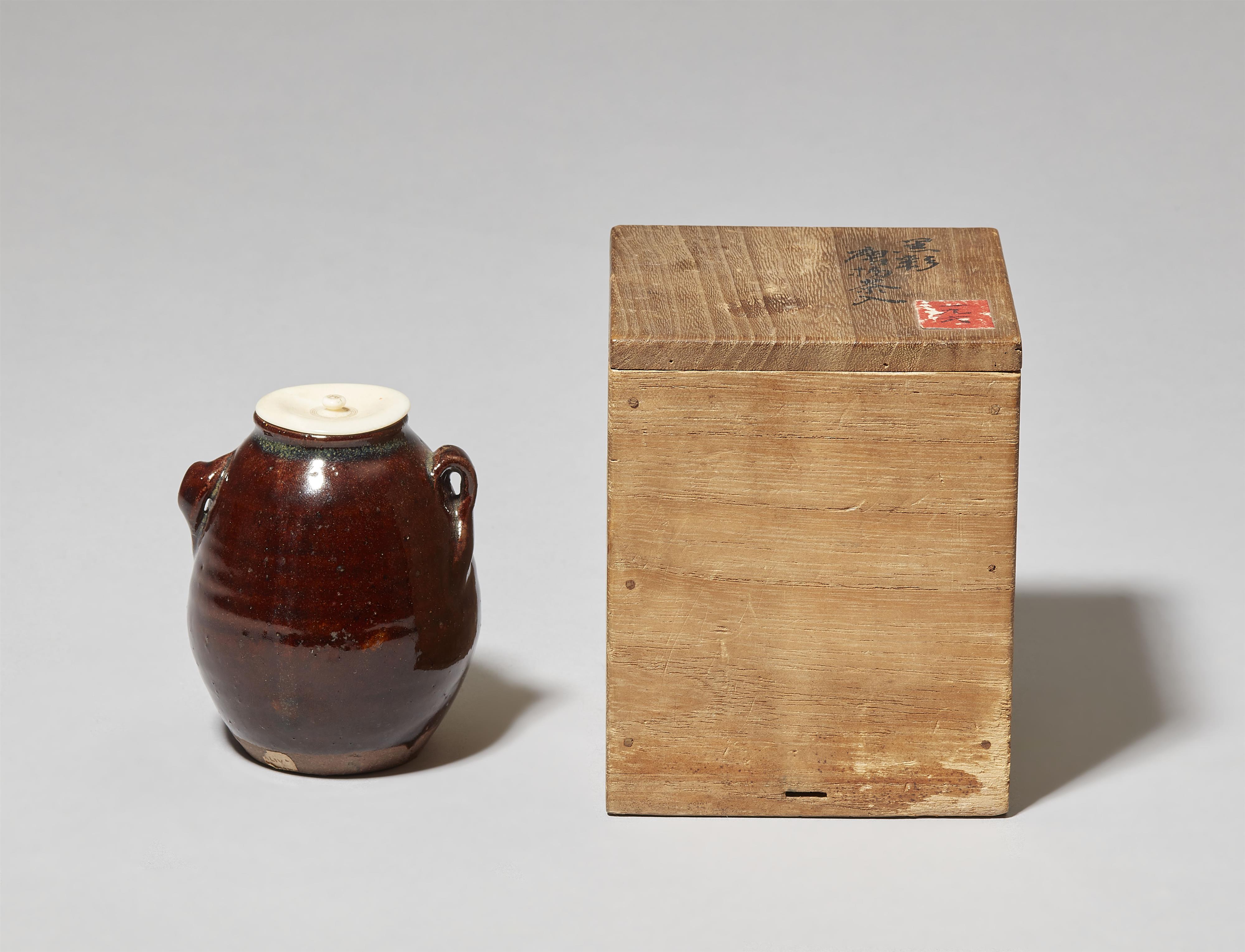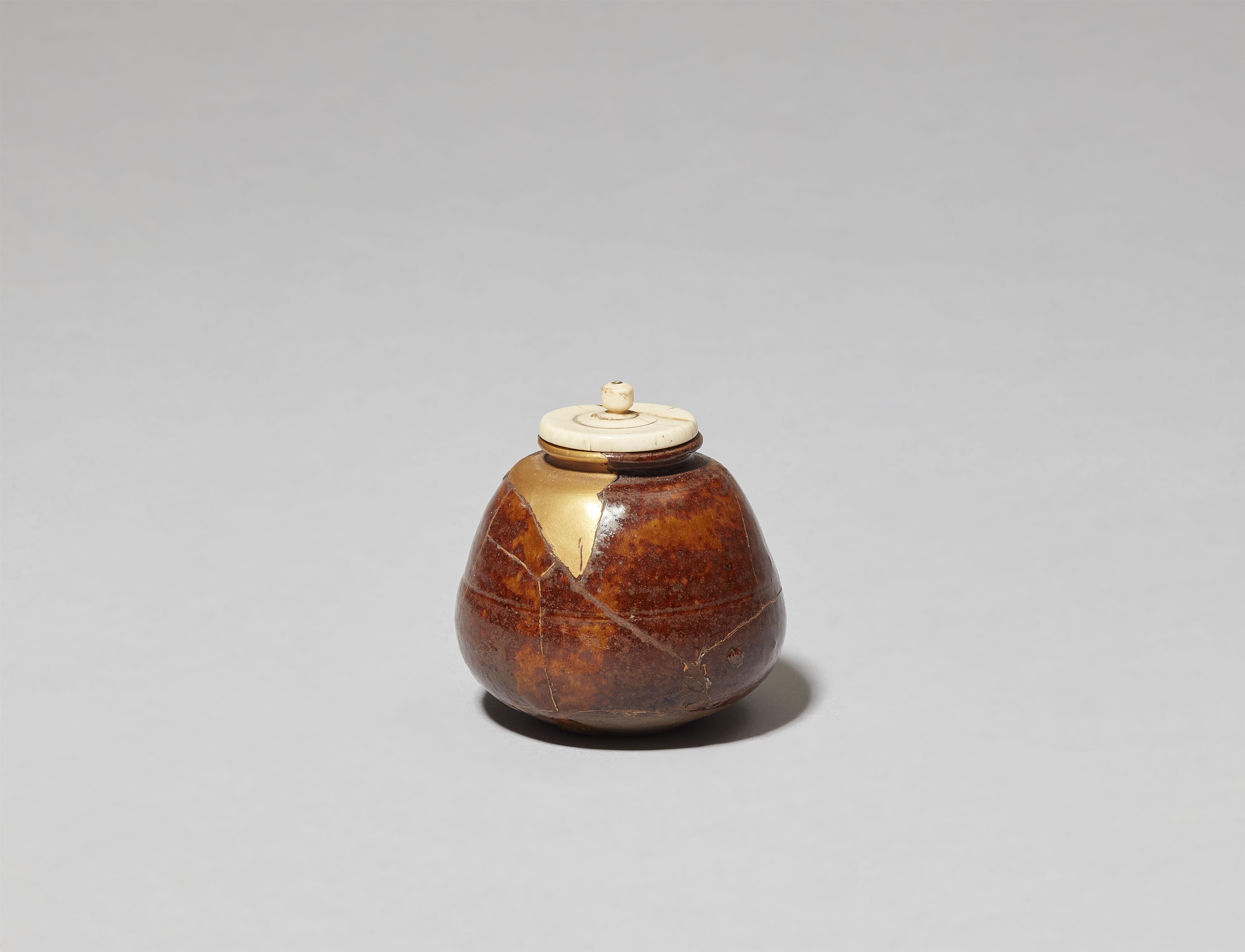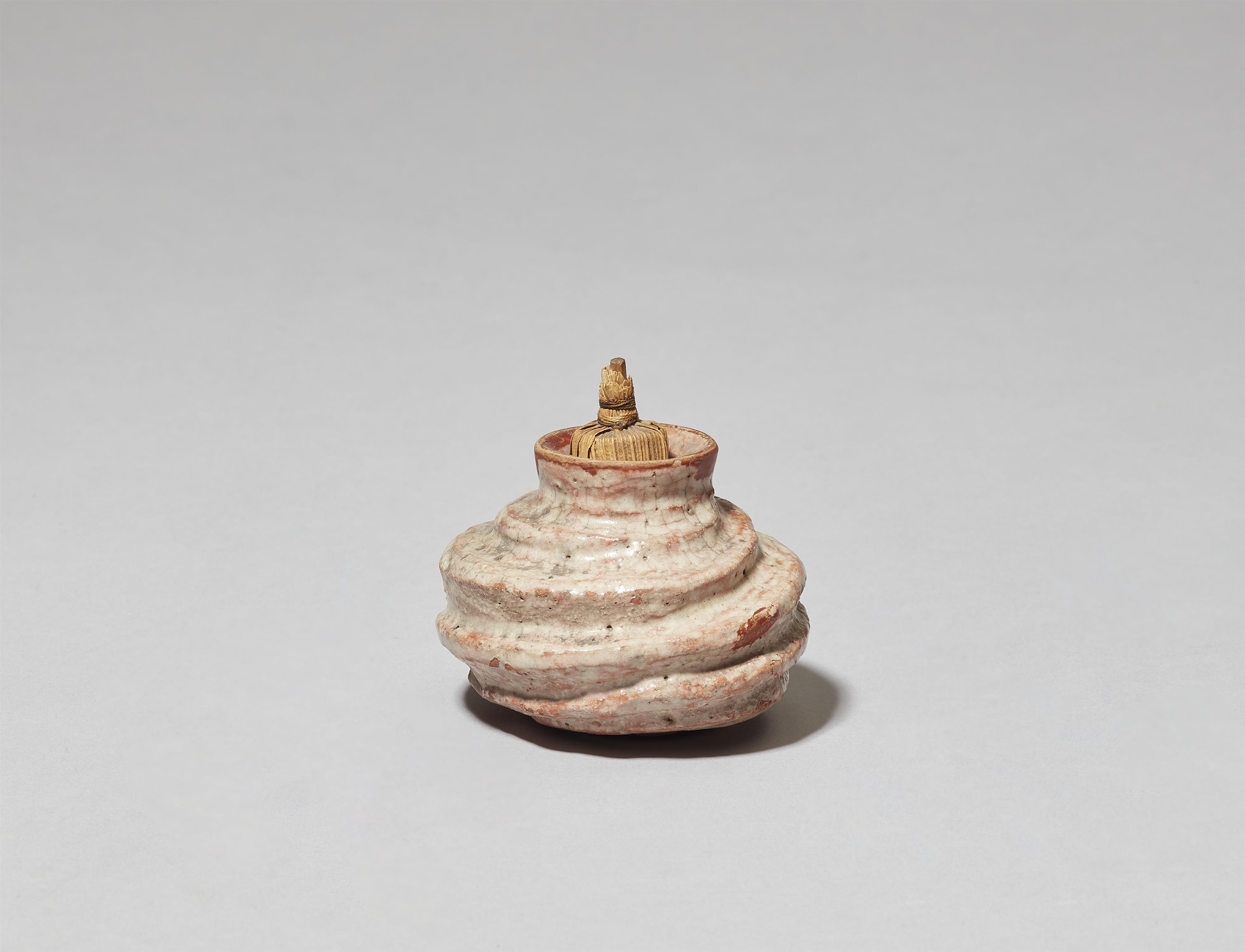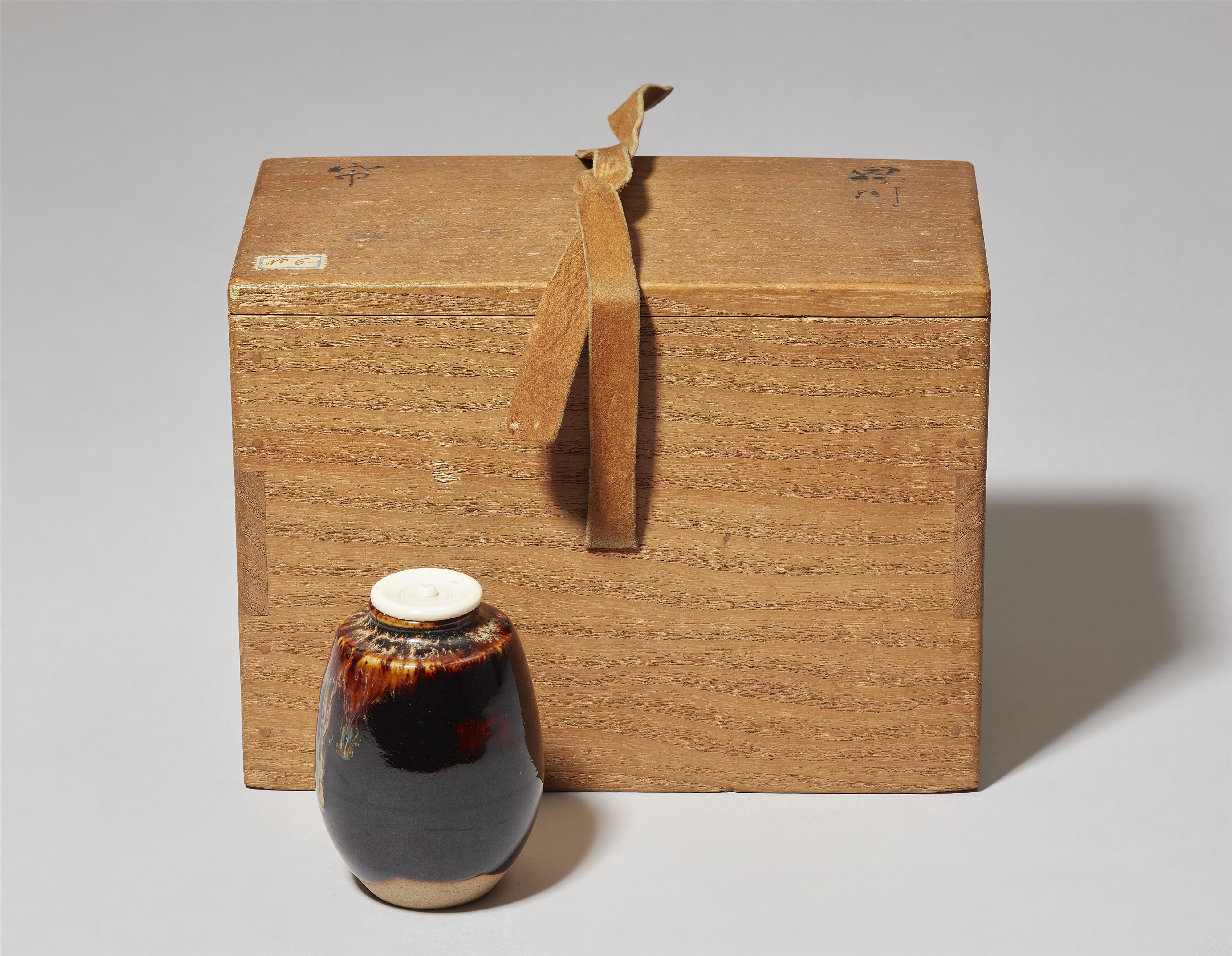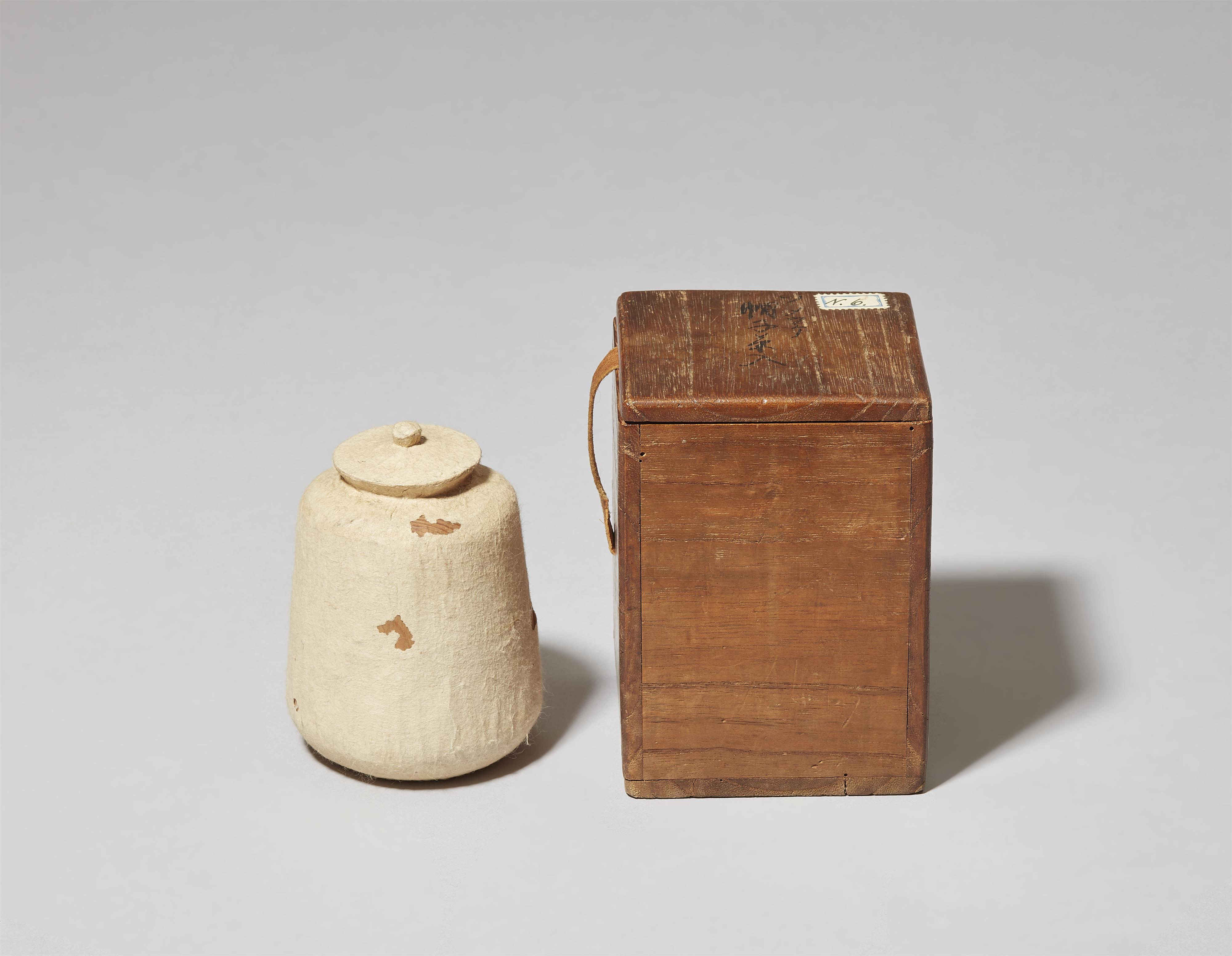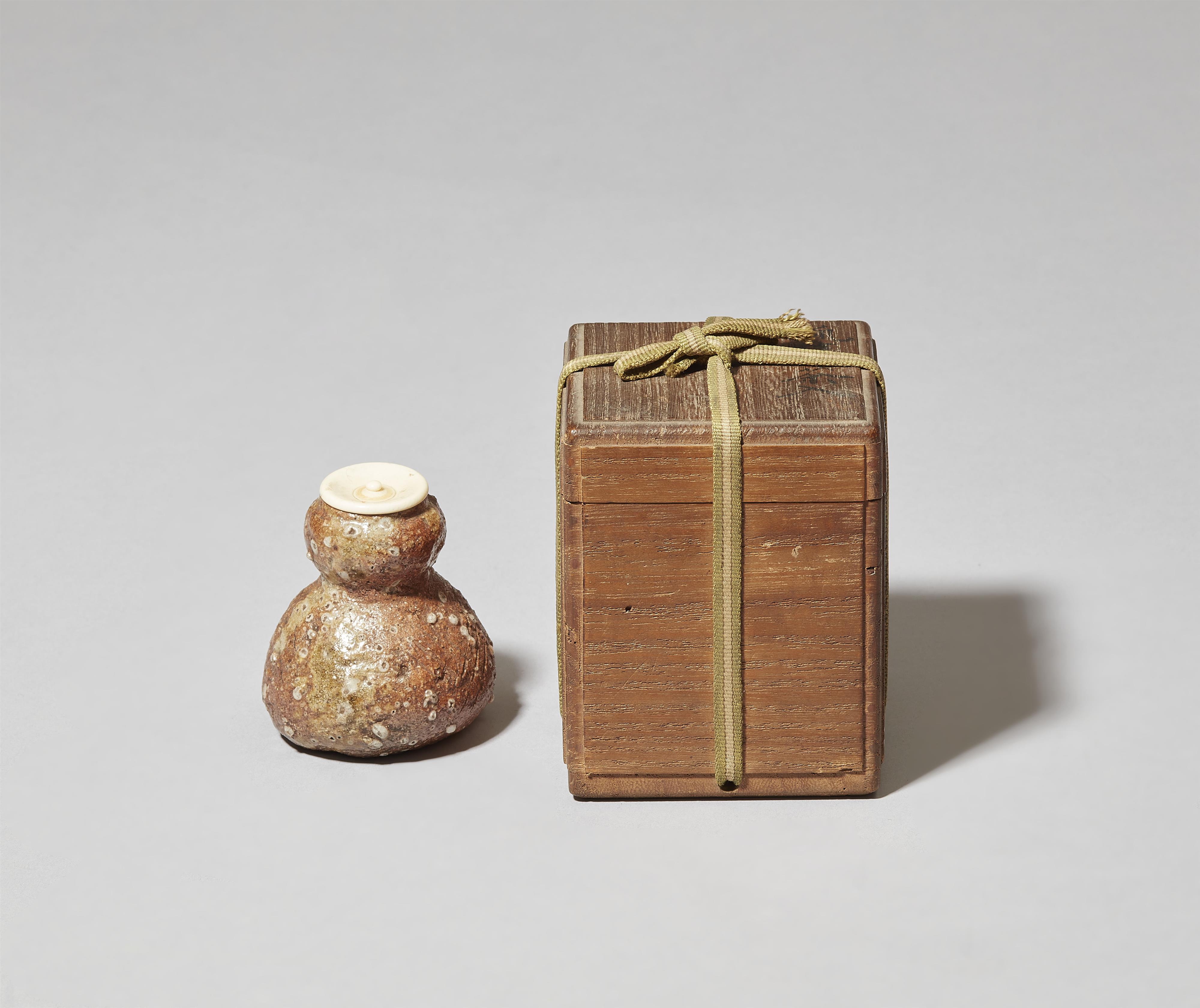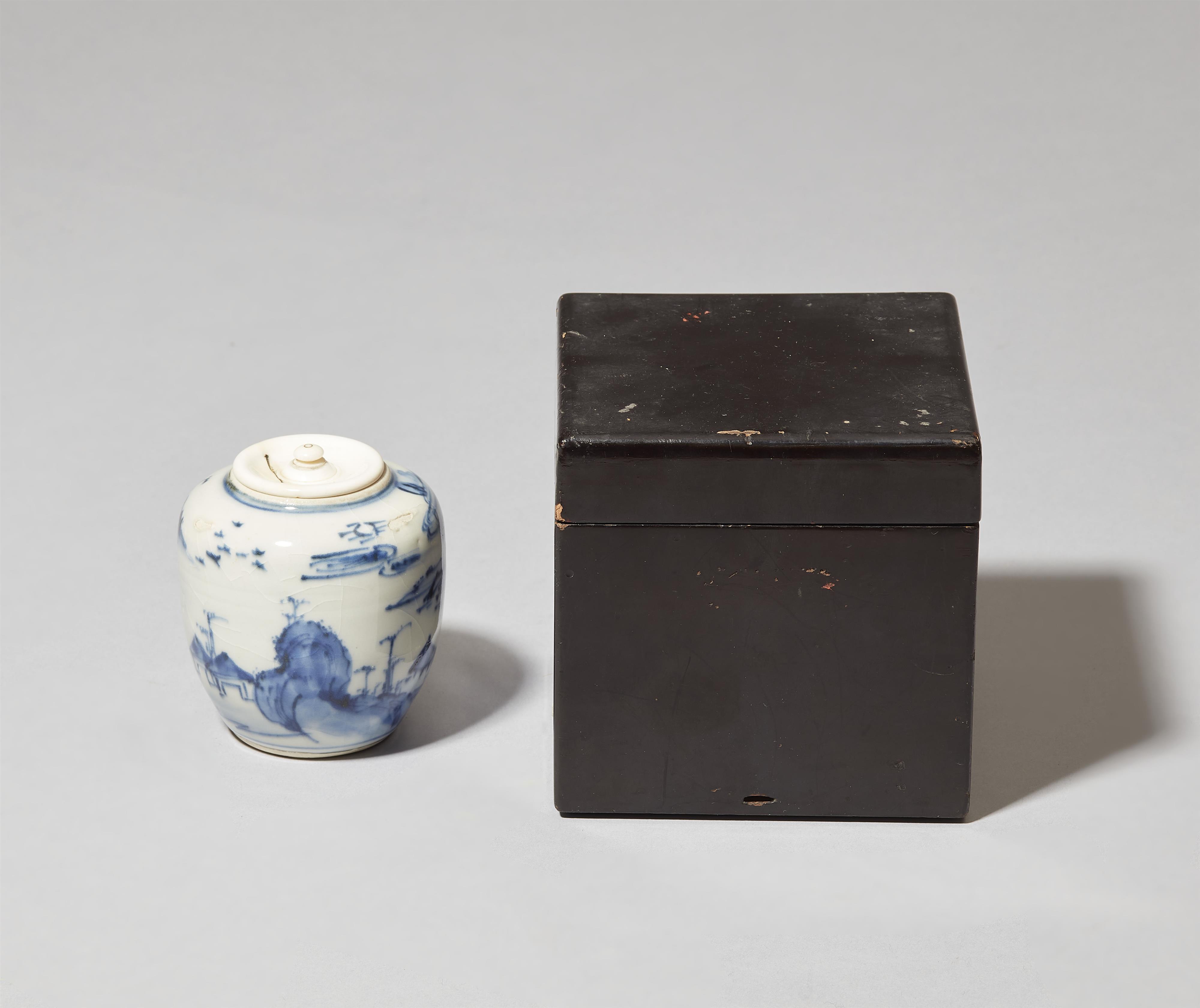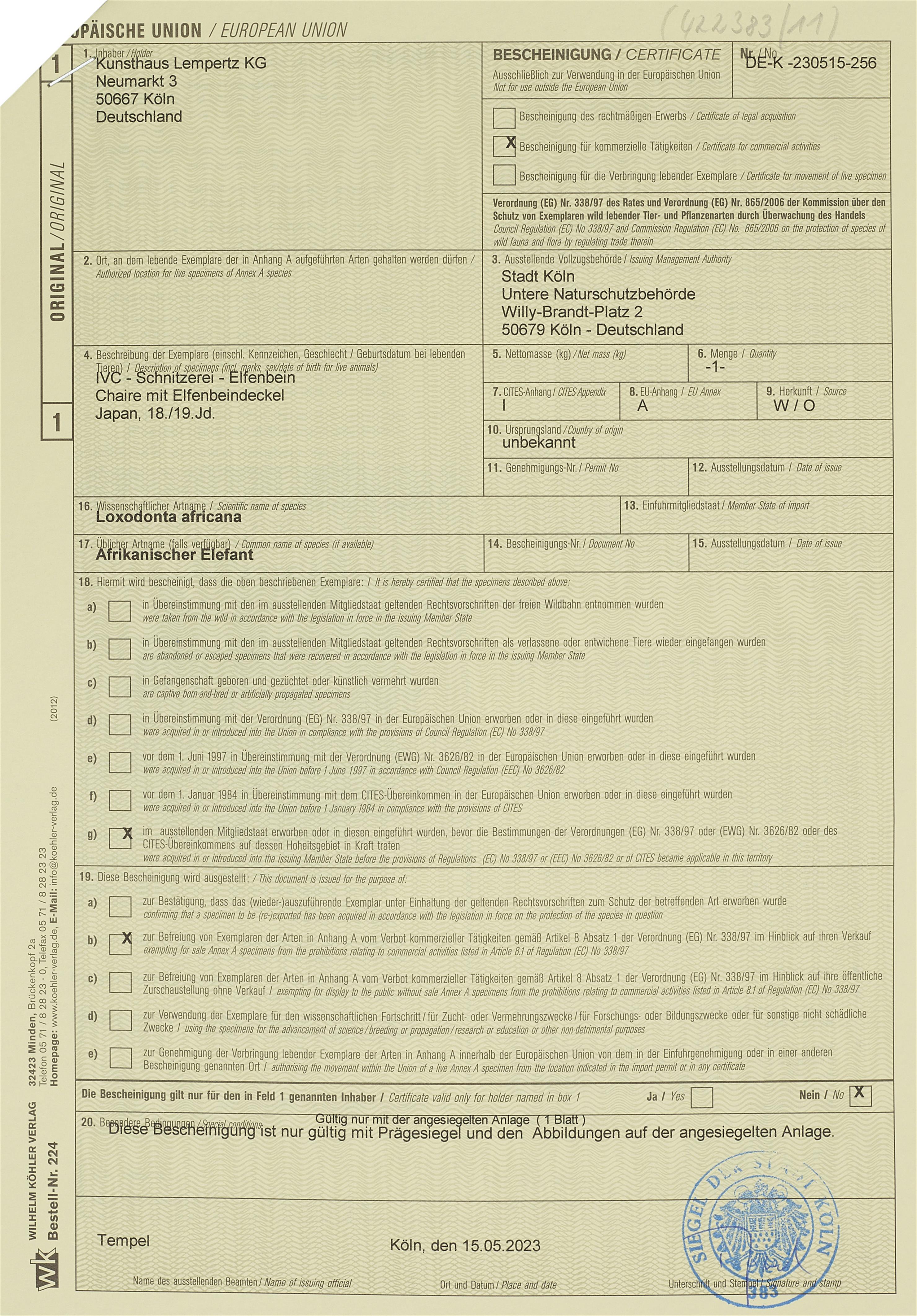A group of nine chaire with ivory covers, a furidashi and a wooden model for a chaire. Edo period
a) Chaire. Tsubo form. Chestnut brown glaze. Gold lacquer restoration to the lip. Ivory lid. Shifuku made of old brocade. Wooden box with paper label inscribed: no. 6.
b) Chaire. Ovoid pot with hand-formed handles. Glossy brown glaze. Old paper label pasted to the body inscribed: XLIV Karasu. Ivory lid. Shifuku made of old brocade. Wooden box, inscribed on the lid: kokusai (black glaze) karamono chaire and the collection number 196 in Japanese; on the back of the lid two paper slips inscribed: 1100- karamono Itokiri and Toshiro yaki karamono no itokiri.
c) Chaire. Nasubi form with itokiri. Brown and amber spotted glaze. Toshiro-yaki. Extensive gold lacquer repair. Ivory lid.
d) Furidashi (container for sweetmeats). Squat form with horizontal grooves. Whitish Shino glaze. Lacquer rep. Lid made from a dried corn leaf.
e) Chaire. Katatsuki form with itokiri. Glossy blackish brown glaze and light glaze stripe. Ivory lid. Inscribed box for two chaire, paper label inscribed: no. 6.
f) Chaire with lid, mold made of wood covered with paper. Shifuku made of old brocade. Wooden box, the lid inscribed: sometsuke eboshi chaire, paper label inscribed: no. 6.
g) Chaire. Hyôtan form. Body with quartz inclusions and ash glaze. Shigaraki. Ivory lid. Silk cloth. Wooden box, the lid inscribed: hyôtan chaire, on the back of the lid two labels inscribed: opschrift: Hyotan-chaire and Shigaraki SF 1650.
h) Chaire. Tsubo form. Porcelain, painted in underglaze-blue with surrounding landscape. Probably Kyoto. Glaze defects. Ivory lid. Shifuku. Black-lacquered wooden box, on the reverse of the lid two paper labels inscribed: porcellain Sansui SF 1600 and Kyoto sometsuke 1600.
i) Chaire. Hyôtan form. Incised diagonal lines on the body. Brown-speckled glaze. Raku. Old paper label on the body inscribed: XXXV and Raku. Comes with: shifuku with padding. Wooden box for two chaire, the lid inscribed Higo yaki chaire, on the back of the lid two paper labels inscribed: Hyotan Form 1700. SF and Raku SF 1700.
j) Large chaire. Itokiri. Black silvery glaze. Karatsu. Lacquer repair to the lip. Ivory lid. Shifuku of old brocade. Wooden box, on the lid inscribed Japanese paper label, on the back of the lid: illegible Japanese inscription with kaô and two paper labels inscribed: Karatsu SF 1800 and Karatsu Hon-itokiri Karatsu.
H a) 8.9 cm; b) 8.2 cm; c) 6.2 cm; d) 5.2 cm: e) 8.1 cm; f) 9.2 cm; g) 6.3 cm; h) 7 cm; i) 8.2 cm; j) 8.6 cm
A clue to Tikotin as previous owner of this lot comes from the small square labels in the lid of five wooden boxes. On these, there is not only written the name of the kiln, but also a four-digit number preceded by the letters "SF". SF is the old abbreviation for "Swiss franc" and thus points to Tikotin, who lived on Lake Geneva from 1960 and conducted his art business from there.
It must have been Tikotin who bought at least five chaire and the furidashi at the Sotheby Mak van Waay B. V. auction in Amsterdam on 12/13 May 1982. Here, a Dutch collection of tea ceramics came on the market that was amassed in Japan around 1900 and had remained more or less untouched up to that date. A special feature of this collection was that all the chaire still had their original bags (shifuku) and wooden boxes. The expert at the time, J. van Daalen, wrote the fine catalogue entries, including a mention of the boxes (doos) and distinguishing between the enclosed wrapping cloths (lapje) and bags (shifuku [zakje]). Since the shifuku were sewn from precious old brocades (meibutsugire), van Daalen also gave a short description of them. He acknowledged the importance of these paraphernalia for tea ceramics in his brief article "Lids, Boxes and Bags, Some Notes of a Collection of Tea-Ceramics, in: Andon, Jg. 2, No. 5 (1982), pp. 18-22.
Provenance
From the estates of Felix Tikotin (1893-1986) and Louis (Loek) Borensztajn (1935-2021)
Literature
Sotheby Mak van Way, Amsterdam, 12.5.1982, c) lot 806; d) lot 874; g) lot 840; h) lot 917; i) lot 912 (at that time without box), j) lot 810

